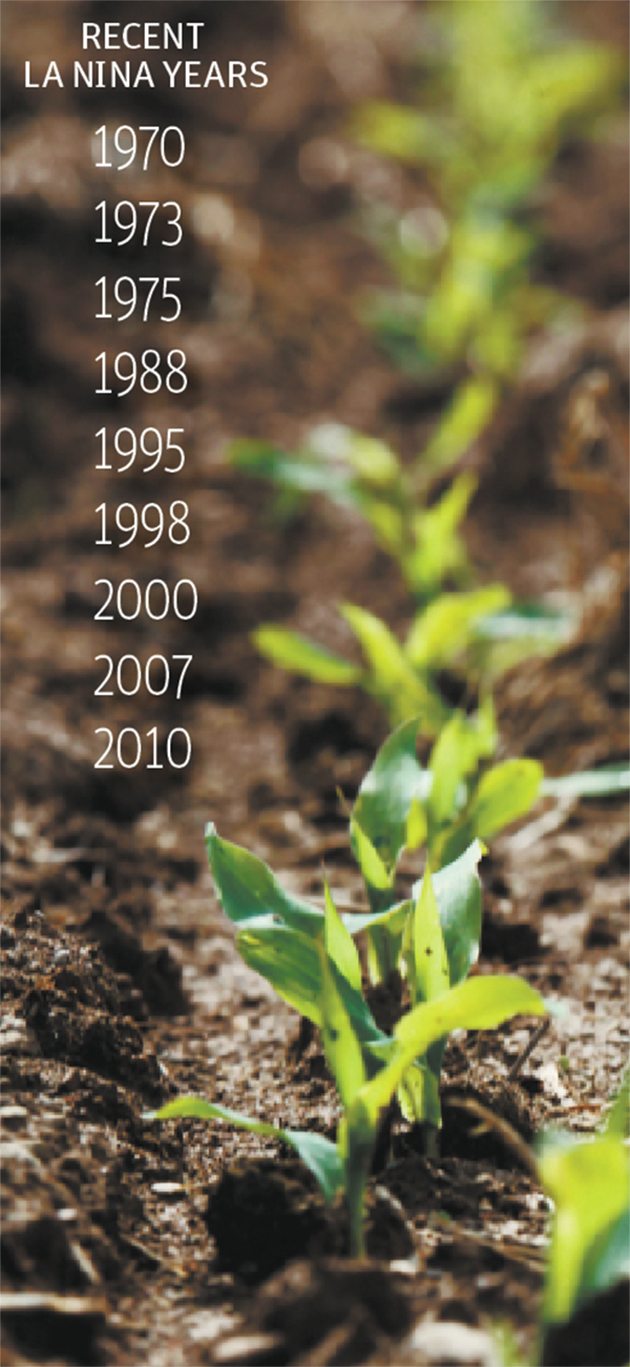A stronger La Nina in northern Brazil would be welcome because it would bring much-needed moisture after several years of drought
Chances of La Nina developing later this summer are waning and if it does emerge it will likely be a weak one, say weather forecasters.
The declining weather risk in North America has pressured crop prices sharply lower. The risk now shifts to the potential impact on South American crops planted this fall.
The U.S. Climate Prediction Center says there is a 55 to 60 percent chance of the weather phenomenon developing from August through October.
That is down from its forecast a month ago of a 75 percent chance.
Read Also

Government support for Canadian farmers has plummeted
Subsidies in Canada were 30 per cent of gross farm receipts in 1980s and are now around eight per cent

The Australian Bureau of Meteorology believes there is a 50 percent chance of a La Nina developing before the end of 2016, which amounts to a coin toss.
Drew Lerner, president of World Weather Inc., said there has been a setback in recent weeks.
“La Nina is still trying to evolve but it is having a great deal of difficulty,” he said.
La Nina is characterized by a cooling of the sea surface temperatures in the central and eastern tropical Pacific Ocean.
A pool of water below the surface of the tropical Pacific Ocean that has been cold for a long time is suddenly diminishing. That pool of water influences sea surface temperatures.
“In the areas west of the International Date Line, the amount of cool water has been just about eliminated. It’s almost near normal there,” said Lerner.
A large pool of cold water still exists east of the date line, which means La Nina still has potential to evolve but it would not be as strong as previously expected.
Ten of the 17 climate models Lerner tracks are calling for a La Nina to develop by late summer. The vast majority of those are forecasting a weak La Nina.
“With all this diminishing cool water to the west, the staying power of La Nina potentially is being greatly reduced,” he said.
If a weak La Nina evolves, it will create warmer and drier fall conditions in the corn and soybean growing areas of the U.S.
However, Lerner points out that most of the models say a La Nina won’t evolve until September or beyond, which would be too late to counteract the current forecast for a wet finish to the growing season.
It would likely have a bigger impact in South America, where it typically causes dry conditions in eastern Argentina, Uruguay and southern Brazil.
“That would suggest the wheat harvest in southern Brazil would probably be good for the first time in three years,” he said. Previously, rain at harvest would hurt quality.
It would also bode well for the planting of corn and soybean crops in that region in October and November but there might not be enough moisture to get the crops off to a good start.
Lerner said back in the 1980s a La Nina forecast would be a scary prospect for Brazil but corn and soybean production has spread north to states like Mato Grosso where La Nina typically delivers ample rainfall.
Brazil’s northern states have been suffering from prolonged drought, so a La Nina would be a welcome development because it brings above average rainfall to the north.
Lerner thinks the net result would still be reduced Brazilian corn and soybean production but not nearly as bad as that caused by the La Ninas of the 1980s.
Brazil’s first corn crop is usually planted between the end of September and the end of November. Soybeans go in the ground between October and early December.
The driest weather would be in September and October, which means the impact wouldn’t be as severe in Argentina where soy and corn are planted later than Brazil.
Lerner believes it could reduce Argentina’s corn production but would have little impact on its soybeans, which start going in the ground in late November.















